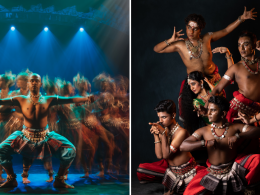One of the greatest things about living in Malaysia is the melting pot of cultures. Each ethnic group has contributed to what Malaysia is today, creating a unique tapestry of festivals, cuisines, cultures, and heritages.
And while we may all be used to celebrating one festive period after another, did you know that we may potentially be celebrating both Chinese New Year and Ramadan together?
M’sians could be celebrating Lunar New Year and Hari Raya together in 6 years time as dates coincide!
Every year, the dates of the Lunar New Year and Hari Raya would depend on their individual calendars. For those who are unfamiliar, due to how civilisation has progressed, the Gregorian calendar has been used universally. But on the other hand, both the Chinese and Islamic calendars are still used in modernity for the calculation of important dates, such as the Lunar Chinese New Year and the Hari Raya Aidilfitri period.

That being said, the dates would slightly vary every year but one of the most interesting things that Malaysians can look forward to in another 5 years’ time is that we could very well celebrate both Chinese New Year and Hari Raya together!
Here is how both the Chinese and Islamic calendars work:
In the case of the Chinese lunisolar calendar, it is counted based on observations of the Sun’s longitude, as well as the Moon phases. Given that fact, the average day in a month based on this calendar would be around 28-29 days, and there would be a leap month added at approximately every 2 to 3 years.
To calculate the Chinese New Year dates, one must first determine the date of the New Moon closest to the beginning of the spring season in the Northern Hemisphere, which is known as Lìchūn. Typically, Chinese New Year falls between the dates of January 21st to February 20th.
On the other hand, the Islamic lunar calendar is based on astronomical observation of the moon phases. A new month begins only when a waxing crescent moon is observed shortly after sunset, and is traditionally determined by an authorised individual or committee. Unlike other calendars that would add a leap year or leap month into their calendars to synchronise it into the solar year, the general Islamic calendar would fall under 11 days short consistently according to the solar year.
The date of the Hari Raya Aidilfitri celebrations, otherwise also known as Eid al-Fitr, is calculated based upon the sighting of a new crescent moon that marks the tenth month of the Islamic calendar and the end of the ninth month, or Holy Month.

According to the dates Google provided, Lunar New Year in the year 2029 would fall on February 13 while Hari Raya would fall on February 15. But the festivities don’t stop there as according to China Press, it seems like for the next two years after 2029, the dates for both festivals would overlap too!

In 2030, the Lunar New Year will fall on February 3rd, while Hari Raya will fall on February 4th. On the other hand in 2031, the Lunar New Year will occur on January 23rd, while Hari Raya will take place on January 25th.
The last time that Malaysians were able to witness such an event was back in 1998, approximately 25 years ago and we can’t wait to see how happening it can get!
Tap here to give us a ‘Like’ on Facebook and stay up-to-date on the latest news.
Also read: Did you know that current Transport Minister YB Anthony Loke’s family may have invented ‘yee sang’?









